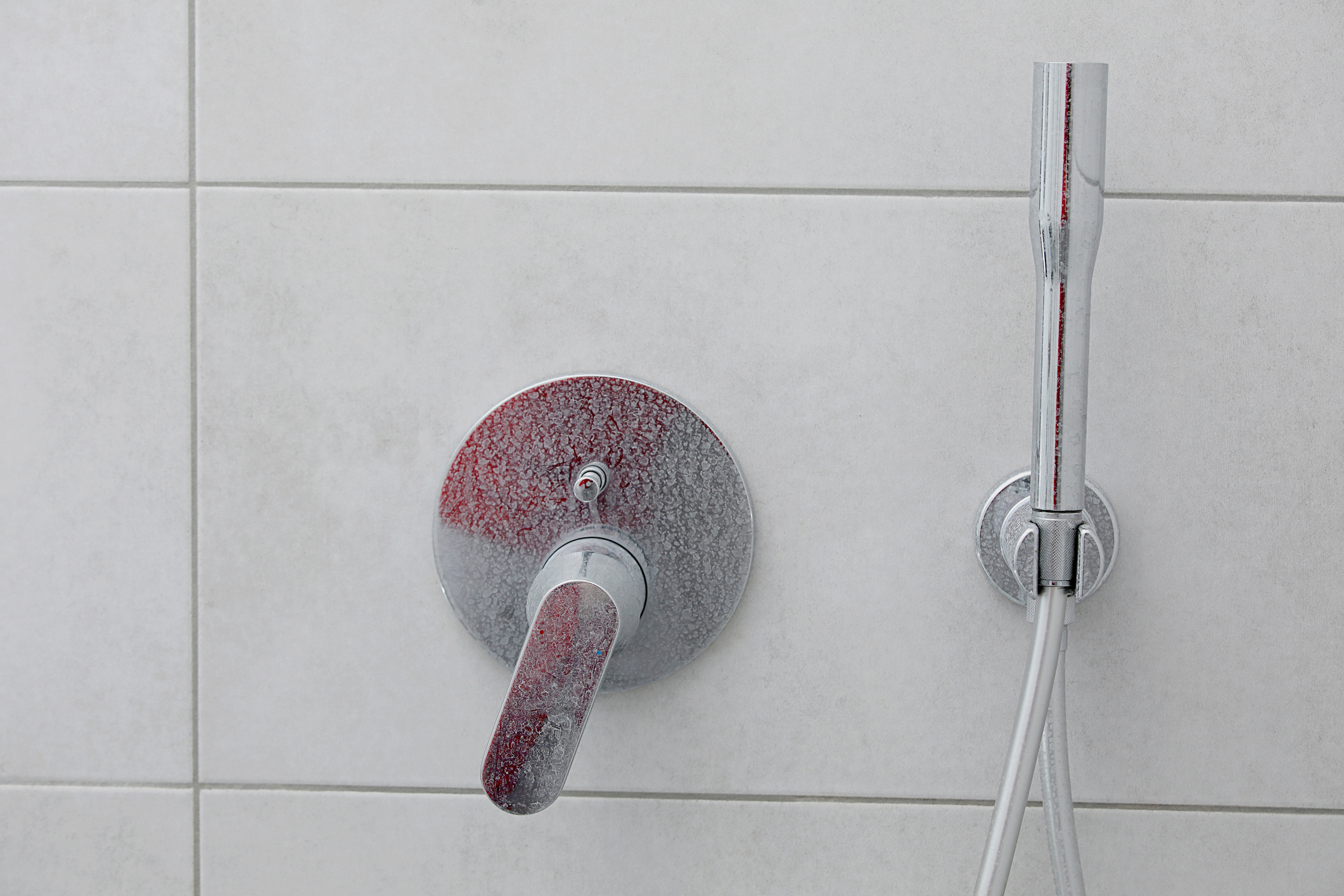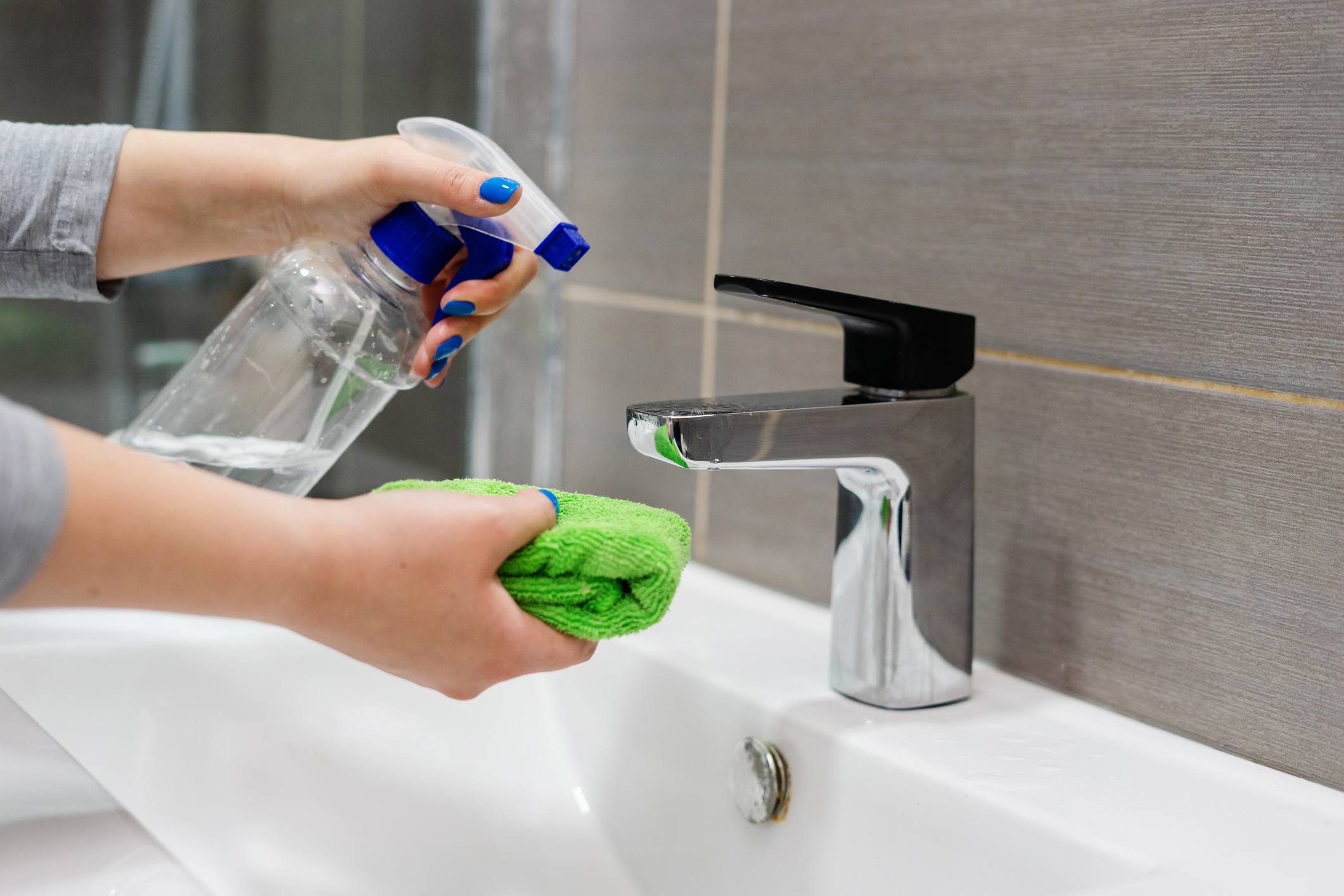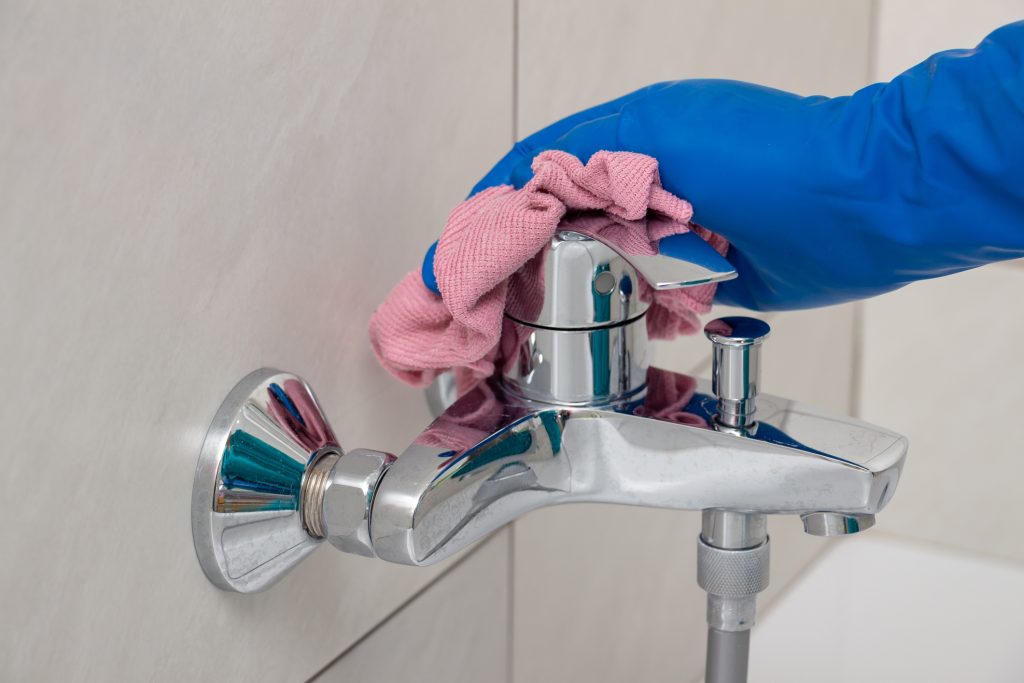Living in the UK, particularly in areas with hard water, means most of us will have dealt with limescale at some point. It’s that chalky, white residue that clings stubbornly to taps, showerheads, screens, tiles – even kettles. While it often starts as a minor visual irritation, over time limescale can cause damage to fittings, reduce water pressure and leave your bathroom looking tired despite regular cleaning.
At our end, we see limescale-related issues all the time when visiting clients’ homes – it’s especially common on chrome fixtures, glass enclosures and inside toilet bowls. Most people don’t realise how quickly it can build up until the shine is gone, and by then, it’s usually more difficult to shift. We always recommend tackling it early, and where possible, preventing it from forming in the first place.
Over the years, we’ve learned what actually works – and what wastes time – when it comes to keeping bathrooms free from limescale. From simple daily habits to more involved solutions, we’re sharing everything we know so you can keep your space looking pristine for longer.




